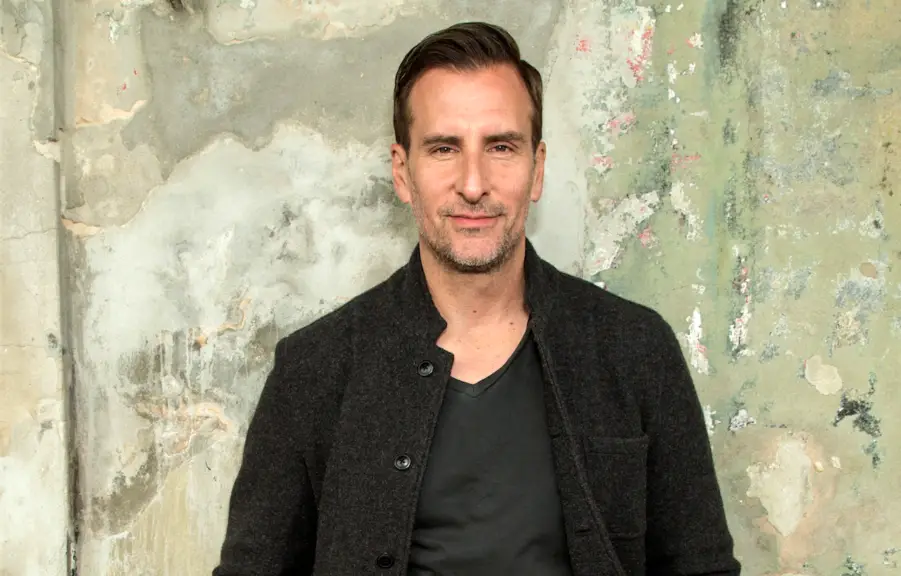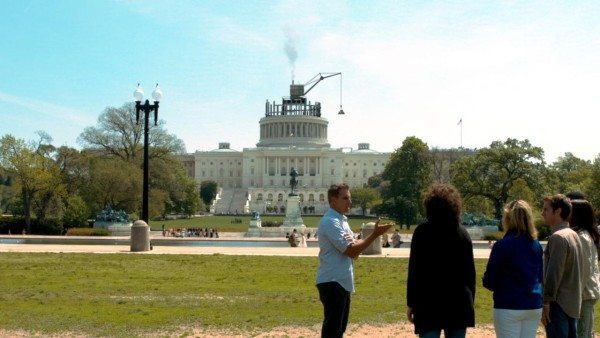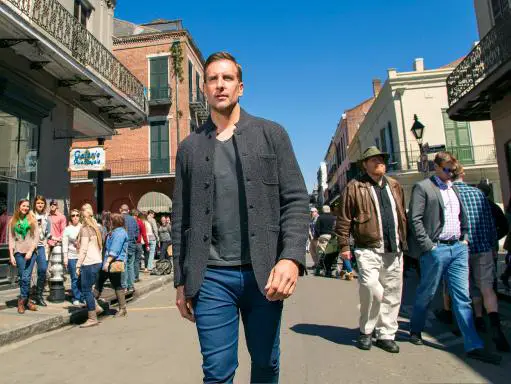
Triphackr: How did this show come to be and how did you get involved?
Brian Unger: I have a long history with Halfyard Productions, the producers of several series I’ve hosted and produced, including “How the States Got Their Shapes.” So, history & geography were very much in our wheelhouse. At the same time, Travel Channel sees these two areas as compelling reasons to travel, as companions to travel, and as context to the big American story. The fit between the two of us felt natural and easy.
TH: You grew up in the Midwest, how did that shape your view on American history growing up?
Brian: I’m not sure the Midwest influenced my perception of history – my teachers did. But my particular geographical upbringing and take on American history isn’t any different from someone who grew up in the Northwest. I think the Midwest influenced me more in a personal way, and its values influenced my storytelling: humility, listening, empathy, openness, tolerance, not wearing out your welcome, politeness – all of the passive, classic Midwest characteristics that are basically the opposite of being a complete jerk.
TH: Did your family take many historical road trips growing up? What are your memories from that experience?
Brian: That’s a funny question – because the answer is no. My folks were public school teachers and administrators, which meant there were no extravagant, far-flung trips, no outward bounds, no big adventures. I remember our first vacation was going to Lake Erie in Sandusky, Ohio. And most of our family vacations were like that — local or within a few day’s drive. And my first trip by air was to Florida – to where else? – Disney World. I’m not sure destinations ever interested me as much as people did: their culture, politics, food, and creativity. These were the things that propelled me beyond Ohio’s borders.

TH: What are the biggest challenges to get people interested in academic history through the show?
Brian: Well, you’ve hit upon the third rail in your question – “academic.” An academic study of history is valuable, but not very effective on TV. Driving, compelling, fun storytelling fuels good TV narrative which means you can’t go down the rabbit hole too far on a specific history. Unless your Ken Burns on PBS, and you’re given 5 nights and 10 hours to dive deeply into one specific history. Viewers want funformative, edutaininment. But the traditional storytelling techniques apply – even for someone like Ken Burns: irony, humor, drama, context, metaphor and so forth. We’re not lecturing anyone or offering college degrees. We’re trying to have fun. And I think we succeed most of the time.
TH: I enjoyed your show “How the States Got Their Shapes.” It told a very interesting side of American history. Now you are hosting a brand new show about American history, have you always been a U.S. history buff or did the show shape you?
Brian: Everyone – including me – has an innate curiosity of WHAT OR WHO CAME BEFORE. It occupies our entire perception of setting, our presence, our reflections, our daydreams, our dinner conversations, even our spirituality. That’s history. I’m just lucky enough to have a job that allows me to satisfy that curiosity.
TH: I’m sure you visited some of the sites from the show as a kid, what is one location that felt completely different visiting as an adult?
Brian: Well, the Grand Canyon certainly put my Lake Erie childhood vacation in perspective. I’m seeing things and places for the first time, in many cases, and in that way, that discovery is beneficial for the show. The reactions are authentic, and I have yet to feel jaded about travel in the U.S. I think as kids we grow up thinking that the theme park take on a history is the entire story. We’re trying to push beyond that construct, and consider history that is hidden, or paradoxically, right under our feet.
TH: What can this show teach us about American history in a way that hasn’t been done before?
Brian: We’re using some fairly complicated computer graphics to bring history alive, to animate actual photos, and to integrate our guests into that imagery and history. We’re imagineering – to borrow a Disney word – history. Our graphic artists are using actual images to paint an authentic picture and narrative – and in those ways I think we’re doing something very unique to make our travels fun. We’re also exposing our guests to a history that they weren’t aware of or took for granted.
TH: If you could introduce one historical figure as your sidekick on the show who would it be?
Brian: Well, who wouldn’t want to hang with Abe Lincoln. Or FDR. But I’m certain both wouldn’t want to be my sidekick.
TH: If you could travel to any period of U.S. history where would you go?
Brian: All of our history, everywhere has some value. Right now, I’d like to travel back to when and where I put the keys to my storage unit.
TH: Any summer travel plans? What’s your favorite summer travel spot?
Brian: I’m doing a bike tour in southern Ireland, and then spending some time in Paris. But I’m most looking forward to being home.
TH: Thanks, Brian.
And Check out Time Traveling with Brian Unger Monday’s at 10PM on the Travel Channel.


